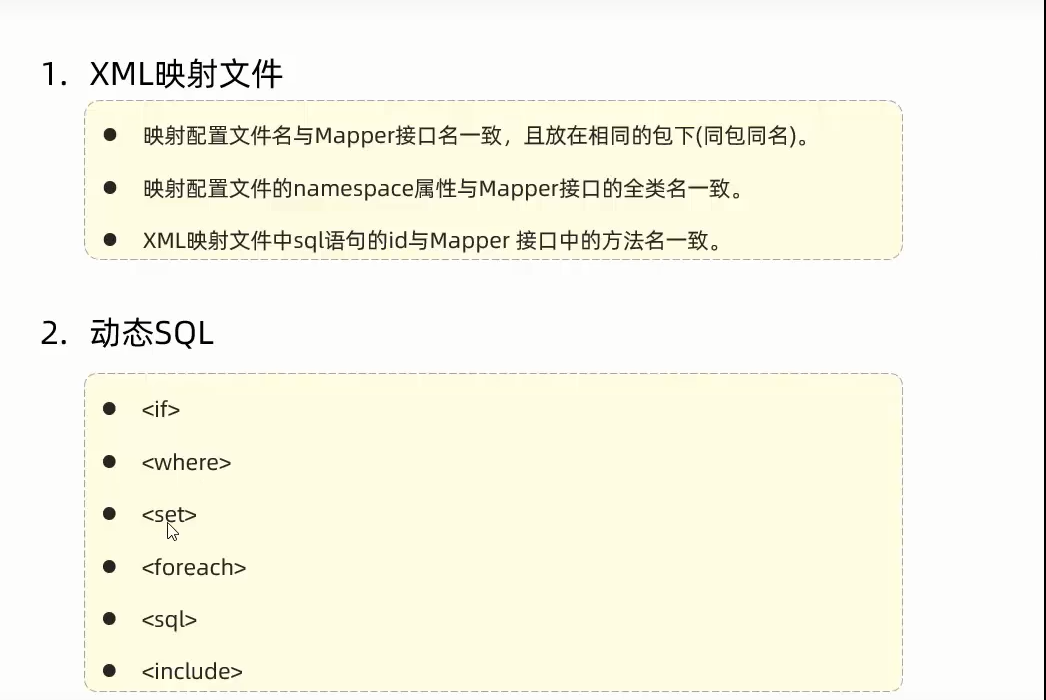使用XML映射文件配置SQL语句的规范
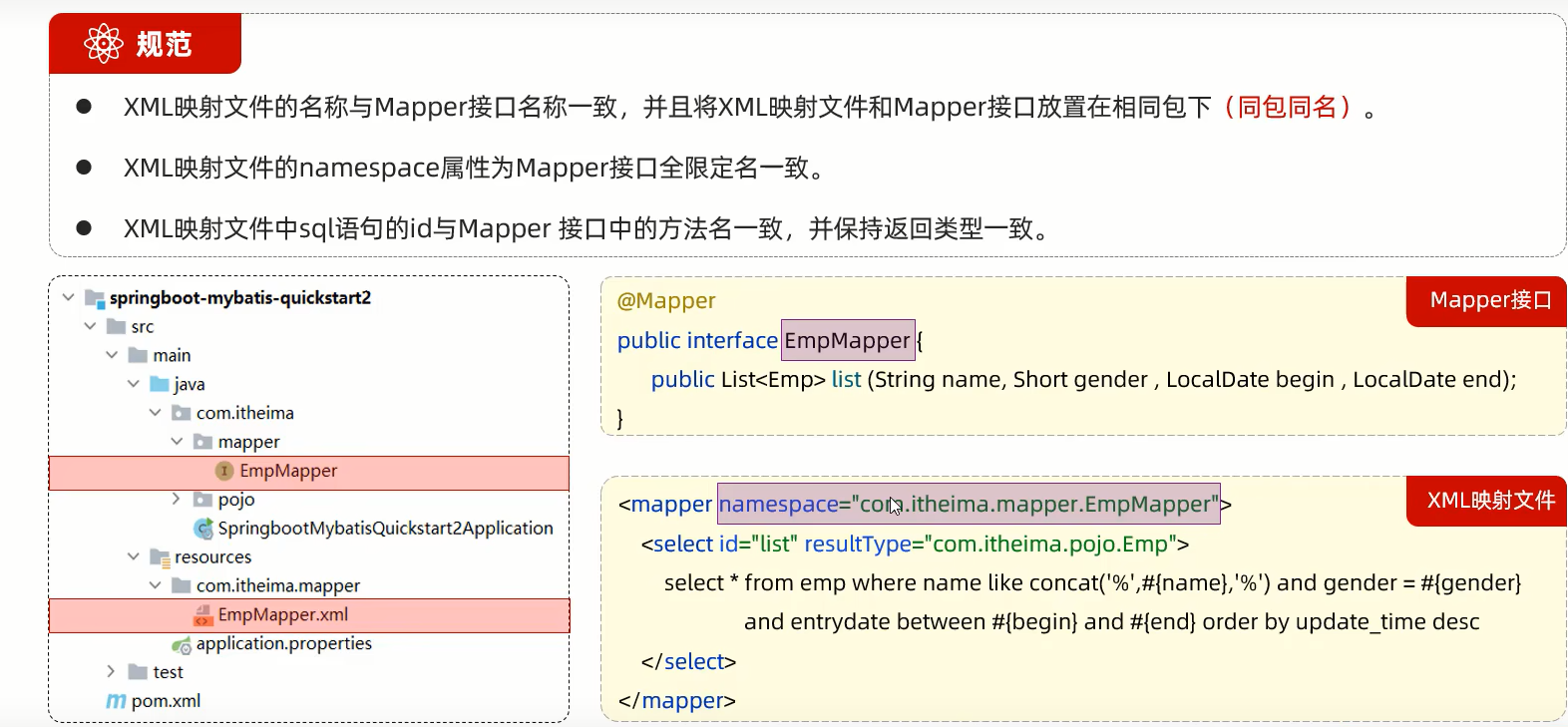
XML文件当中的Mapper标签里面使用的select标签的id属性是Mapper接口里面的方法名,resultType属性名是SQL语句要返回的对象类型。
MybatisX插件
用于管理接口方法和映射文件的关系

注解和XML配置SQL语句两种选择

动态SQL——where标签和if标签的使用
在如下的图中,可以只需要输入其中一些值来进行查询,但是在使用注解进行开发时没法做到。
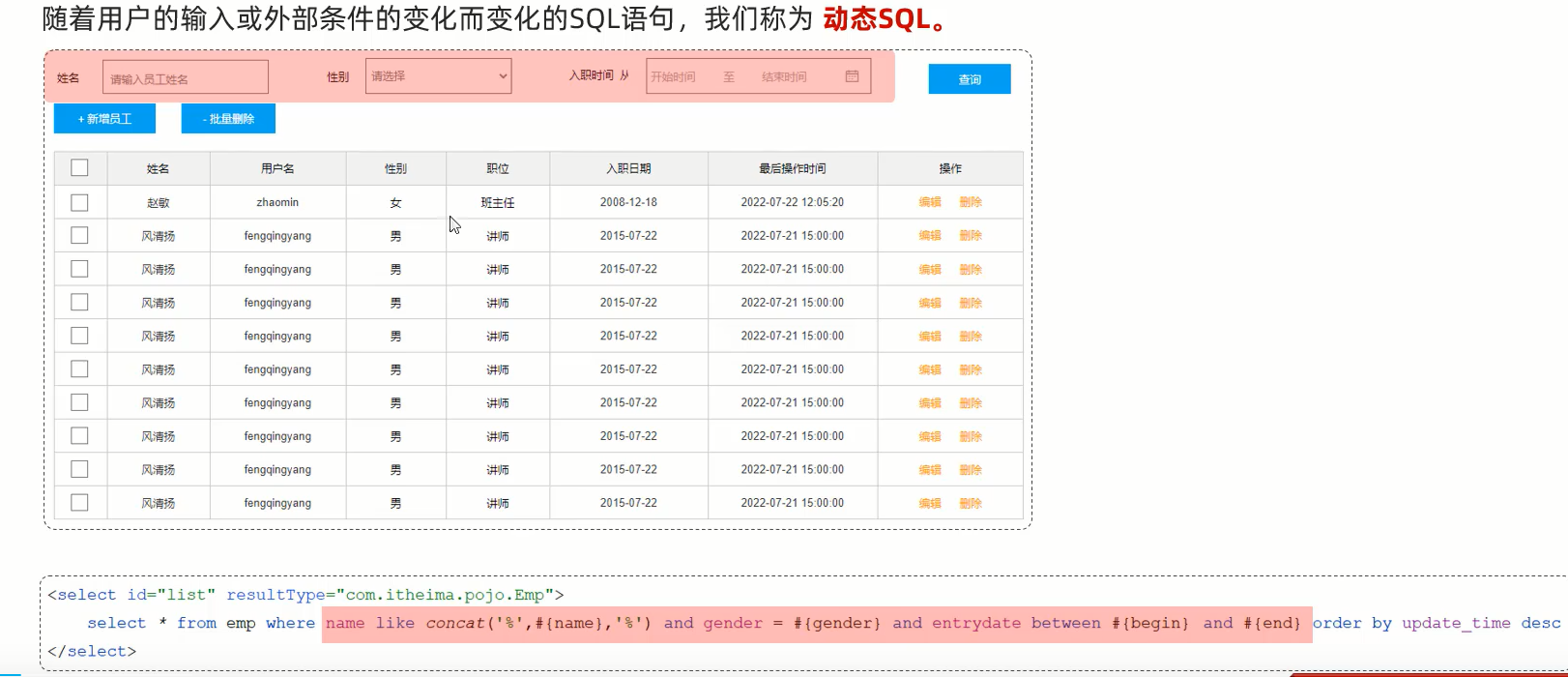
要实现的效果是查询时有哪些字段就根据哪些字段来查询。
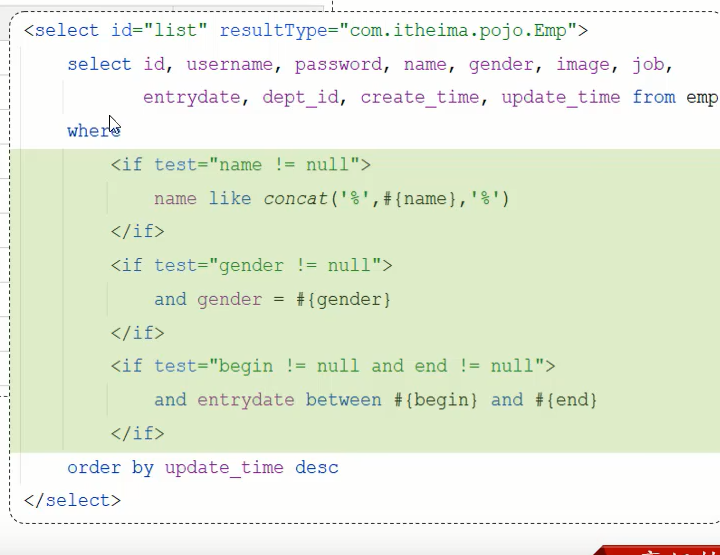
只输入 姓名查询后输出如下,预编译SQL中只有一个条件。
 但是这里还有一个问题,假如name为空时其他判断不为空组装的SQL语句会有问题
但是这里还有一个问题,假如name为空时其他判断不为空组装的SQL语句会有问题
没有name时,where 后面的条件会出现一个and
条件全部为空时,where后面直接没有条件了,因此要修改成如下的形式
使用提供的where标签,会动态的根据里面的if标签成立与否生成where
还有一个作用就是可以自动去除多余的and和or
<select id="list" resultType="com.example.pojo.Emp">
select * from emp
<where>
<if test="name!=null">
name like concat('%',#{name},'%')
</if>
<if test="gender!=null">
and gender = #{gender}
</if>
<if test="begin!=null and end!=null">
and
entrydate between #{begin} and #{end}
</if>
</where>
order by update_time desc
</select> 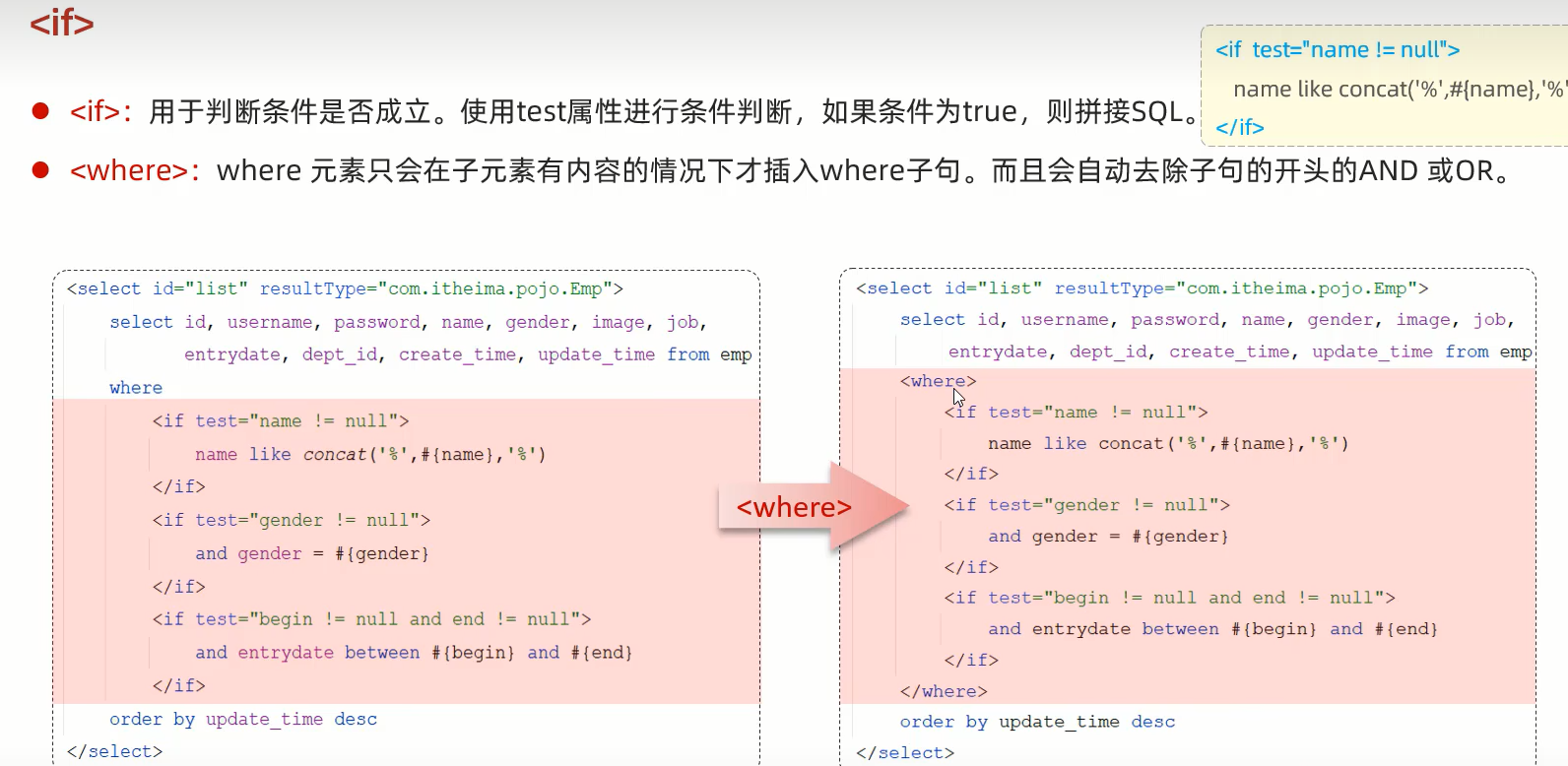
if和set标签-案例
在更新操作里面,如果传进来的emp对象的字段只更新了一部分,那么按照原本的方法会出现剩下的字段变为null,这是不合理的,我们要做的是根据哪些字段有更新值才更新。
@Update("update emp set username = #{username}, name = #{name}, gender = #{gender}, image = #{image}," +
" job = #{job}, entrydate = #{entrydate}, dept_id = #{deptId},update_time = #{updateTime} where id = #{id}")
public void update(Emp emp);使用XML配置开发SQL语句
(按住ctrl+alt+L格式化)
<update id="update">
update emp
set
<if test="username!=null">username = #{username},</if>
<if test="name!=null">name = #{name},</if>
<if test="gender!=null">gender = #{gender},</if>
<if test="image!=null">image = #{image},</if>
<if test="job!=null">job = #{job},</if>
<if test="entrydate!=null">entrydate = #{entrydate},</if>
<if test="deptId!=null">dept_id = #{deptId},</if>
<if test="updateTime!=null">update_time = #{updateTime}</if>
where id = #{id}
</update>但是这里也会有一个问题如下 ,只传递了一个值多了一个逗号

解决方案
使用myabtis提供的set标签,可以把后面的逗号自动去除
<update id="update">
update emp
<set>
<if test="username!=null">username = #{username},</if>
<if test="name!=null">name = #{name},</if>
<if test="gender!=null">gender = #{gender},</if>
<if test="image!=null">image = #{image},</if>
<if test="job!=null">job = #{job},</if>
<if test="entrydate!=null">entrydate = #{entrydate},</if>
<if test="deptId!=null">dept_id = #{deptId},</if>
<if test="updateTime!=null">update_time = #{updateTime}</if>
</set>
where id = #{id}
</update>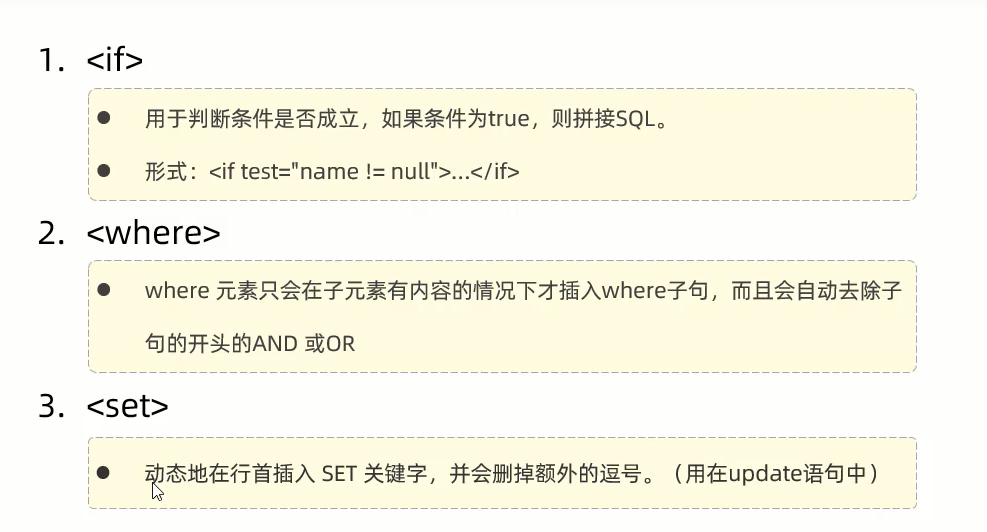
动态SQL——foreach标签
要实现一个批量删除的操作,将传进来的id一个一个删除元组
在Mapper接口中新增如下方法,使用List传进去所有需要删除的id的集合
public void deleteByIds(List<Integer> ids);根据SQL语句比如有 delete from emp where id in (18,19,20)
在XML中如下配置
<delete id="deleteByIds">
delete from emp where id in
<foreach collection="ids" item="id" separator="," open="(" close=")">
#{id}
</foreach>
</delete>四个属性
collection: 要遍历的集合item: 遍历出来的元素separator: 分隔符 open: 遍历开始前拼接的SQL字段close: 遍历开始后拼接的SQL字段
单元测试:
@Test
public void testdelete(){
List<Integer> ids= Arrays.asList(14,15,16);
empMapper.deleteByIds(ids);
}
输出如下

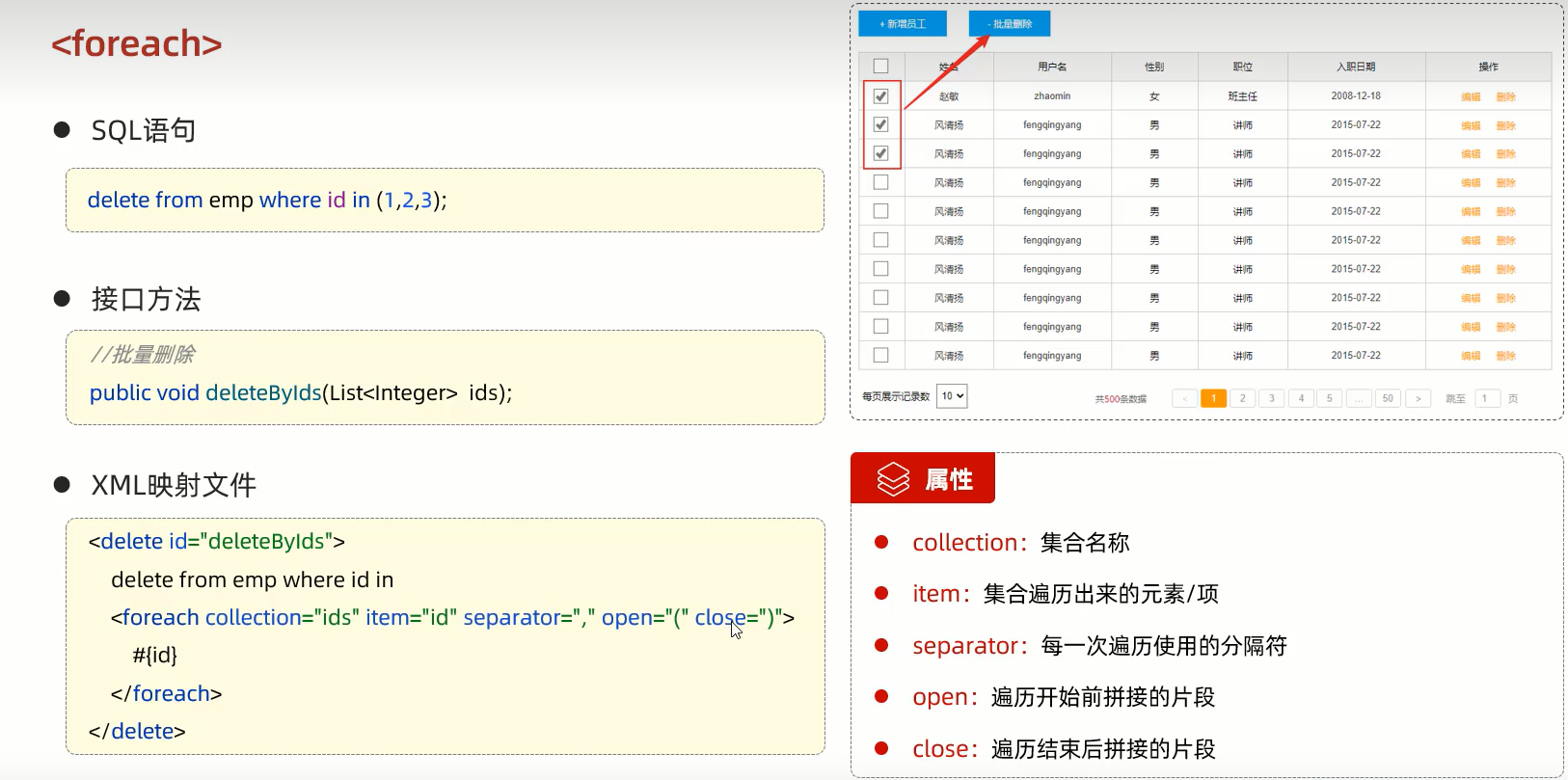 动态SQL——sql标签和include标签
动态SQL——sql标签和include标签
需求分析 : 如下的两个select语句中假如将来有修改,那么需要改动的地方很多,所以要将公共部分抽取出来进行封装。
此处借助<sql>和<include>标签进行实现

使用<sql>进行抽取,有一个id属性作为唯一标识,在需要用到的地方使用<include>引入,有一个refid就是对应要引入的<sql>片段的属性值
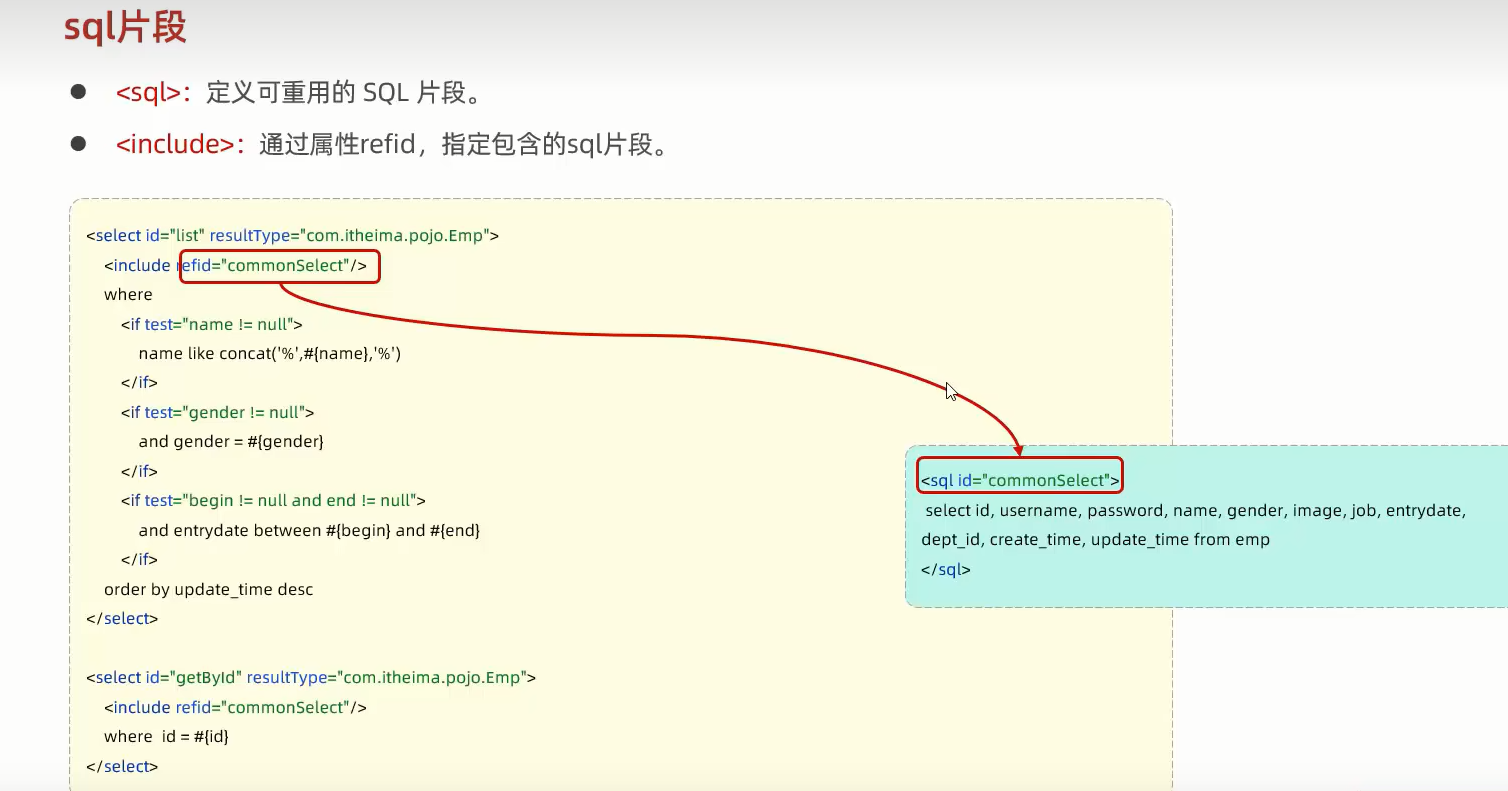 最后总结3个准则和6个标签
最后总结3个准则和6个标签
